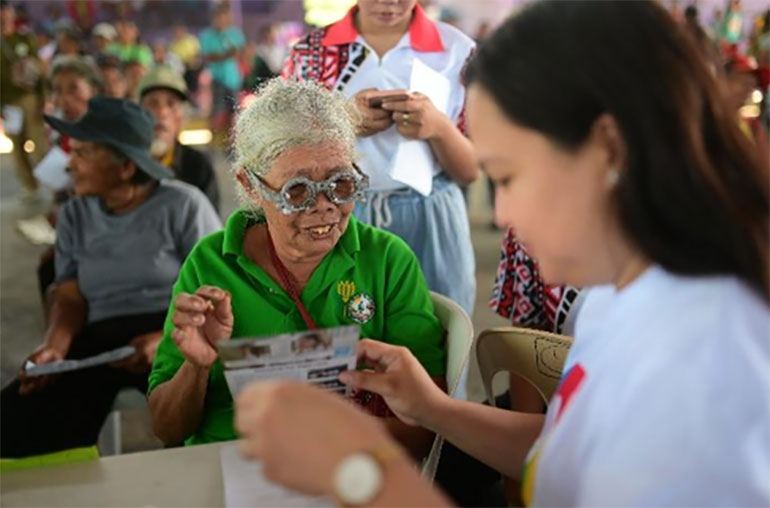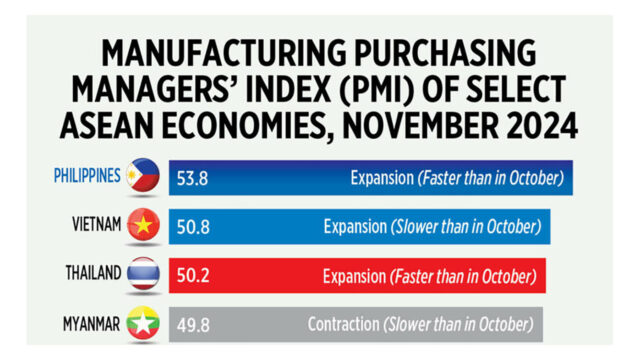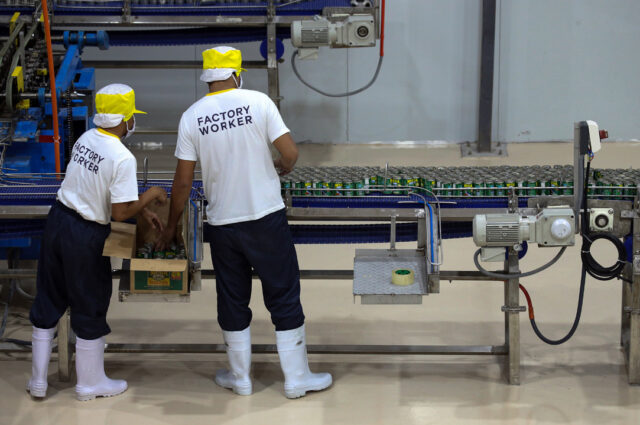By Luisa Maria Jacinta C. Jocson Reporter
PHILIPPINE ECONOMIC GROWTH may fall short of the government’s target this year amid a slower-than-expected rise in consumption and investment, the ASEAN+3 Macroeconomic Research Office (AMRO) said.
In its latest Annual Consultation Report, AMRO cut its gross domestic product (GDP) growth projection for the Philippines to 5.8% this year from its 6.1% estimate in October.
This would fall below the government’s revised 6-6.5% growth target for 2024.
AMRO said household spending and private investment were weaker than expected this year due to elevated inflation and high interest rates.
“Household consumption, underpinned by a strong labor market and robust remittances, continued to expand, but at a slower pace due to the lagged impact of high inflation.”
“Private investment is gradually rebounding but has yet to reach pre-pandemic levels, partly due to weak investment sentiment amid high interest rates,” it added.
Latest data from the Philippine Statistics Authority (PSA) showed that Philippine GDP growth averaged 5.8% in the first nine months of the year.
For 2025, AMRO retained its growth forecast of 6.3% for 2025.
“The pickup in growth is driven by higher government spending as well as an upturn in external demand and strengthening domestic demand,” it said.
The think tank also expects domestic demand to improve moving forward, which would support growth.
“Private consumption is anticipated to grow faster in the rest of the year, supported by strong labor market conditions, lower inflation and robust overseas remittances.”
“With the start of the monetary policy easing cycle, private investment sentiments are expected to improve,” it added.
However, AMRO said the growth outlook faces “heightened geopolitical risks” that may increase the likelihood of supply disruptions and further global economic fragmentation.
The Philippine economy’s growth momentum could also be “derailed by a sharp slowdown in major trading partners in the near term,” it added.
“Over the long term, the country’s potential growth could be constrained by insufficient infrastructure investment, vulnerabilities to climate change, and prolonged scarring effects caused by the coronavirus disease 2019 (COVID-19) pandemic.”
Consumption growth may still be hampered by elevated inflation, it added.
“Philippine growth prospects, particularly private consumption, are clouded by the risk of high food inflation… Higher costs of basic needs would further reduce households’ ability to afford discretionary items and hence constrain household consumption.”
However, AMRO projects headline inflation to average 3.2% this year and the next.
“Inflation is expected to stay broadly within the target range in the second half of 2024 through 2025, benefiting from the continued easing of global commodity prices and government measures,” it said.
The Bangko Sentral ng Pilipinas (BSP) expects inflation to average 3.1% this year and 3.2% in 2025.
“While upside risks such as wage increases and local food supply shocks remain, the decline in headline inflation is expected to continue in the second half of 2024 due to lower commodity prices of fuel and food, and tariff cuts on imported rice,” AMRO said.
“Meanwhile, inflationary pressure will likely remain moderate due to a positive output gap and second-round effects, following increases in minimum wages and persistently high inflation expectations.”
With inflation expected to remain within target, AMRO said that there is room for the BSP to continue its rate-cutting cycle.
“As inflation will continue to ease within the target band, there is room to adopt a less restrictive monetary policy stance if current growth trends continue,” it said.
“However, if supply-side risks emerge, a whole-of-government approach should be taken to address inflationary pressures.”
Since August, the central bank has lowered borrowing costs by 50 basis points (bps), bringing the key rate to 6%.
The Monetary Board is set to have its last policy review for the year on Dec. 19.
“As year-to-date inflation has returned to the upper half of the target range, the BSP has room to gradually adjust the policy rate to a moderately restrictive stance,” AMRO said.
“This will lend some support to private investment and allow the BSP to rebuild space for renewed policy rate hikes if inflationary risks were to reemerge.”
Meanwhile, AMRO said that the Philippine government’s fiscal consolidation efforts can still be enhanced.
“The current fiscal-monetary policy mix is appropriate and can be adjusted further to support economic growth while rebuilding policy buffers.”
AMRO expects the fiscal stance from this year to 2025 to be “neutral.”
It projects the fiscal deficit settling at 5.7% of GDP this year and 5.6% of GDP in 2025, driven by “robust revenue collection despite higher expenditure.”
“Moving forward, the fiscal balance is expected to gradually decline to 4.2% of GDP by 2028,” it added.
The latest data from the Treasury showed the budget deficit narrowed to P963.9 billion in the January-October period.
The government has set a deficit ceiling of P1.52 trillion this year, equivalent to 5.7% of economic output. It expects to lower the budget gap to 3.7% of GDP by 2028.
RISING DEBT
Meanwhile, AMRO expects the National Government’s (NG) outstanding debt to rise slightly before easing further.
“Public debt is projected to increase slightly from 60.1% of GDP in 2023 to 60.7% in 2024, due to the government’s sustained funding needs and higher debt servicing costs.”
“However, it is expected to gradually decrease to 57.6% of GDP in 2028, on account of improved fiscal positions and robust economic growth.”
The NG’s debt-to-GDP ratio stood at 61.3% at the end of September, still above the 60% threshold deemed by multilateral lenders as manageable for developing economies.
The government seeks to bring the ratio down to 60.6% by the end of 2024, and below 60% by 2028.
“While the need for strategic adjustments in medium-term fiscal policy to support the economy is recognized, fiscal consolidation should be accelerated when conditions allow,” AMRO said.
“The government is likely to continue its medium-term fiscal consolidation plan at a slower pace to better support economic growth. However, it would be prudent to quicken the pace of fiscal consolidation if conditions allow, as restoring fiscal space remains critical to build greater resilience to external shocks amid elevated uncertainty.”
AMRO recommended efforts to expedite revenue mobilization and increase efficiency, as well as long-term fiscal reforms for fiscal sustainability.
“Overall financial stability remains sound; at the same time, a more active use of macroprudential toolkits could be considered to mitigate the financial stability risks,” it said.
“Some signs of vulnerabilities have emerged in certain areas, such as the household and property sectors, which warrant close monitoring. Meanwhile, the authorities should strengthen the institutional framework to safeguard financial stability and deepen the bond and repo markets.”















